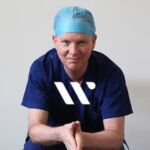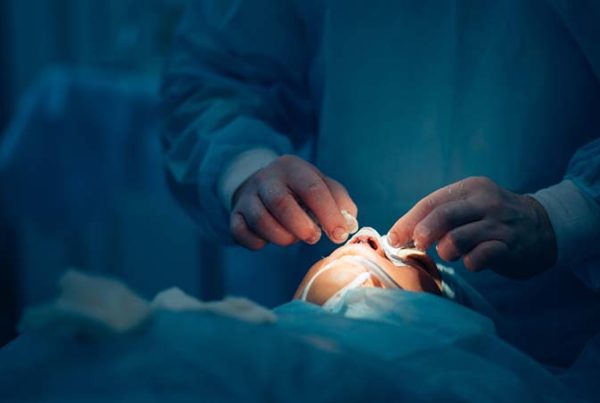
As plastic surgeons, we consult in our office with patients considering surgery. Most operations are simple to explain, and the personal consulting process works well. It’s tried and true and goes back to the origins of medicine in Ancient Greek times. Through taking a history of the concern from the patient (Listening), observing and then examining the patient (Examination), plus obtaining any tests necessary (Investigating), the doctor works out what the medical problem is (Diagnosis).
But does this work for modern rhinoplasty consulting in well people who are seeking to change the appearance or function of their nose?
I believe that rhinoplasty deserves a far deeper level of discussion and thought than it currently gets. If you are reading this because you’re interested in having rhinoplasty (a nose job), it helps to know more than just the conventional explanation of the procedure.
For many operations, it’s possible to explain quite quickly to a patient how the procedure works. In a breast reduction, we simply reduce the breast, leaving a scar on it. There are several key points for the patient to understand in order to make a decision as to whether to have the operation.
But asking a plastic surgeon to explain a rhinoplasty in a few minutes and fully inform the patient is not really possible – if it is to be done fully and correctly.

Unlike most plastic surgical procedures, rhinoplasty is technically complex as an operation . It requires a high level of both precision and judgement and intraoperative decision-making of a high level, once the true internal anatomy of the nose is revealed by the operative exposure. And it’s infinitely variable. No two cases are identical.
The truth is, getting good at this kind of surgery takes years and years of accumulated skills and experience. Every case is different and presents its own challenges. Surgeon don’t just need to have only a few technical operative “tricks” up their sleeves – they need dozens of “tricks” which can be subliminally applied to each situation encountered in the nasal skeleton. Each is hard won, acquired over many years of thinking, asking, learning, reading and assessing results. And each must be applied with aesthetic judgement to create a good-looking nose which consistently meets the goals of the patient.
As surgeons, we also see the full spectrum of personality types seeking rhinoplasty. For some people it’s an easy decision but others have a shopping list of requirements which must be met, or disaster will follow. Some personality types are not well suited to having rhinoplasty surgery and can struggle with all aspects of considering and having the surgery. In short, while most rhinoplasties in experienced hands should be “good” – few are “perfect”.
At the end of the decision-making process, however simple or tortuous, there has to be a leap of faith and trust in the chosen surgeon. There will be expectations which have been created either by the patient, the surgeon, or both. These may be honest, realistic, and readily achieved, or they may not. Honest and open communication is the key here. Good outcomes are not achieved if the patient and surgeon are not on the same page.
Why, you may ask, does this happen with rhinoplasty more than any other plastic surgery procedure? Well, these expectations may have been created by the patient and/or the surgeon, but they may also be physiological. Nasal function is a key aspect of rhinoplasty outcome. Plus, it takes a long time to see the final result, and frustration due to post op swelling is relatively common.
Rhinoplasty is not like other operations. An inexperienced surgeon might be able to produce good breast surgery results, but in my opinion, they simply can’t produce consistently high-quality rhinoplasty results. I am no different to anyone else in this regard, and I had to build my experience. This is why many patients have a rhinoplasty and get a poor outcome. The result may be visible deformities, or poor breathing outcomes, both of which can cause a great deal of distress.
It is my job as a surgeon to explain rhinoplasty in ways that my patients can understand, but when I consult with patients seeking a rhinoplasty, I find it is not usually possible to drill down to the deepest realities of the procedure in an allocated consult time of an hour, with a second consult of 30 – 60 minutes.
What does a fully informed understanding of rhinoplasty achieve for a patient? It’s like not letting a person drive a car until they can pull the engine apart and reassemble it. Most drivers have to trust that the engine will work – and that’s all they need to know in order to be a good driver. Surgeons are the “rhinoplasty mechanics.” By necessity, it’s our job to have the technical understanding and skills, and a perspective about the range of problems we deal with that we can’t reasonably expect a patient to have. But a patient can ask informed questions about how and why things might need to be done to make it all “work properly”.
What’s more, if a patient does attempt to acquire the level of technical sophistication and knowledge required to fully engage in the technical decisions we make, they can develop unrealistic expectations. They may expect a level of subtlety to be achieved that is beyond the technical capability of the surgeon or of their own healing skin, muscle, cartilage and bone.
The ideal balance is when an interested patient learns enough about rhinoplasty to make good decisions, and to fully engage with the operative plan, understanding the consequences of each key part of the operation – but they don’t want or expect to learn how to do one themselves. As the surgeon, it is my job to provide the level of understanding the patient requires to be able to make a fully informed decision. Some patients require more knowledge than others before they can make that decision.
The reason I write these blogs and make these videos is to try and create a deeper understanding between my patients and myself as we approach the idea of working together. This is so that we can create a positive surgical experience and a good surgical outcome from a rhinoplasty procedure, with long term satisfaction that the goals of the surgery have been achieved.
For more on rhinoplasty, visit my procedure information centre and keep an eye out for future posts.
Thanks for reading.
Take a look at my realself profile where you can read patient reviews.





